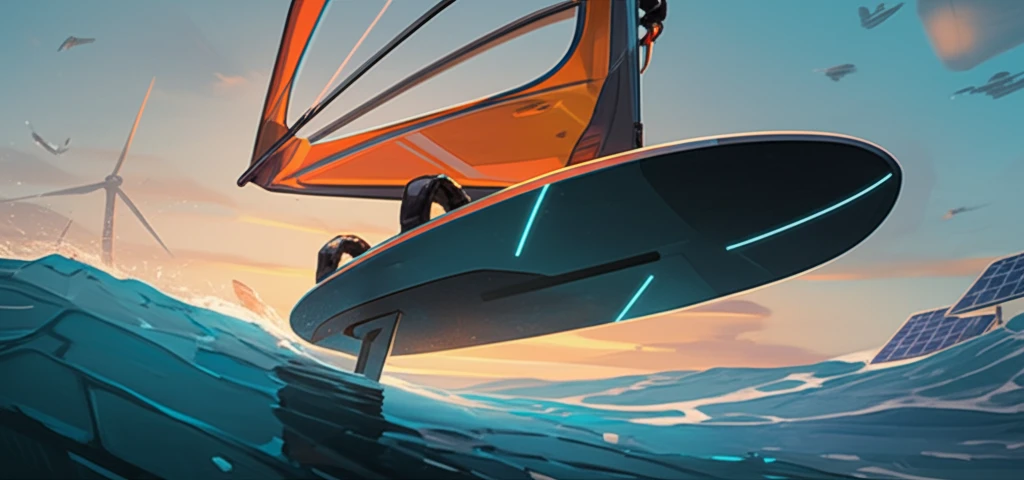
Ride the Wave of Innovation: How Composite Materials are Revolutionizing Watersports and Beyond
"Discover how advanced composite technology is transforming windsurfing and marine applications, making them lighter, faster, and more eco-friendly."
The world of watersports and marine technology is constantly evolving, driven by the relentless pursuit of enhanced performance, durability, and sustainability. At the forefront of this evolution are composite materials, engineered to offer superior strength, reduced weight, and greater design flexibility compared to traditional materials. These innovations are not just improving the recreational experiences of windsurfers and sailors but also driving efficiency and environmental responsibility in the broader maritime sector.
Imagine gliding effortlessly across the water on a windsurfing board that's both lighter and stronger than its predecessors, or witnessing sailboats slice through waves with unprecedented stability and speed. This vision is rapidly becoming a reality thanks to pioneering companies like Cobra International and Chomarat, who are pushing the boundaries of composite technology. Their efforts are paving the way for a new generation of high-performance, eco-conscious marine products.
This article delves into the latest advancements in composite materials, highlighting how they're being applied in the design and construction of windsurfing boards and marine components. We'll explore the innovative techniques and materials that are making waves in the industry, offering a glimpse into a future where sustainability and performance go hand in hand.
Cobra International's Composite Windsurfing Revolution

Cobra International, a leading composite supplier, has recently launched its latest innovation: a composite windsurfing board designed to redefine the windsurfing experience. This new board, part of the Windsurfer LT series, is engineered for versatility, catering to a wide range of users from beginners to seasoned professionals. Whether you're racing, practicing freestyle, or simply enjoying a leisurely paddle on a calm day, this board is designed to deliver optimal performance.
- Lightweight Construction: Uses lightweight EPS core, glass combi fabrics and a bio based foaming epoxy.
- Enhanced Performance: Optimized for racing, freestyle, and recreational paddling.
- Eco-Friendly Materials: Incorporates sustainable materials to reduce environmental impact.
- Durable Design: Built to withstand the rigors of regular use in various water conditions.
The Future of Marine Innovation
As technology continues to evolve, composite materials will undoubtedly play an increasingly crucial role in shaping the future of watersports and the marine industry. From lighter, faster windsurfing boards to more durable and efficient sailboat components, the possibilities are endless. By embracing innovation and prioritizing sustainability, companies like Cobra International and Chomarat are not only enhancing the performance of marine products but also contributing to a cleaner, more environmentally responsible future for the industry.
